Illustrated books have the capacity to teach us so much. Those non-fiction illustrated books, when done well, can introduce real-life figures or events to young audiences in a way that makes them want to learn more. The People’s Painter, How Ben Shahn Fought For Justice With Art by Cynthia Levinson with pictures by Evan Turk is like that. I was familiar with Turk’s work from his great book You Are Home. The style in The People’s Painter is different because it’s in the style of Ben Shahn. For us, and possibly many young readers, Shahn is an artist whose work they won’t know. He had an amazing life, as a young child railing against Czar Nicholas II’s soldiers, escaping to America in 1906 and creating illustrations that documented workers and the poor.
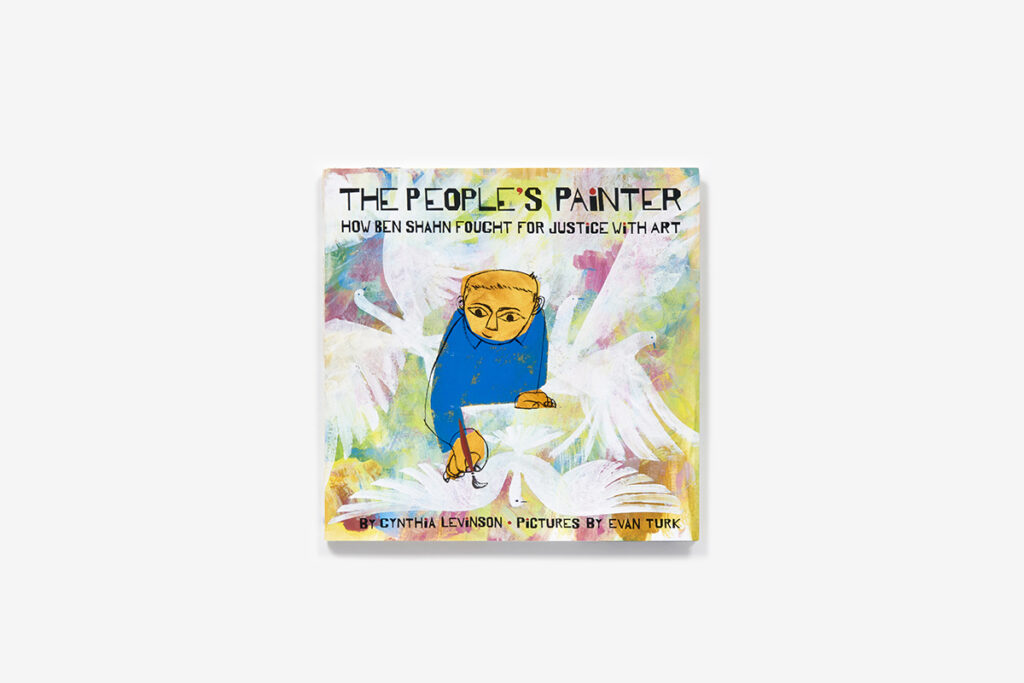
His art is figurative, jarring, and resonated with the working class in the early 1920s. He always loved drawing, but growing up in part of Russia that is now Lithuania was hard. His family was also Jewish, which made things more dangerous. Ben would practice drawing the Hebrew letters as often as he could. He was also a very passionate student, debating with his teachers about those bible verses that had unfair treatment or stories about people getting hurt.
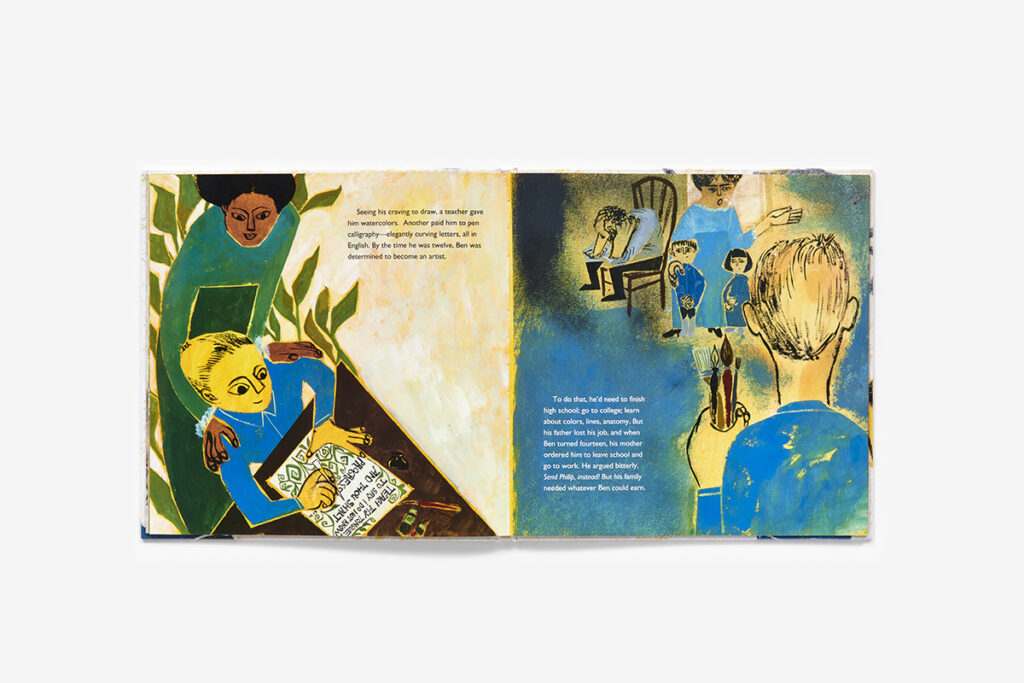
The apple was not far from the tree. Ben’s father was banished to Siberia because he was demanding fair pay for workers. His father was able to escape to America, which then allowed him to send word to his family to join him. While New York City allowed them more benefits, it was still ripe with issues. He still had some bad treatment due to the fact that he was Jewish and jobs were very scarce.
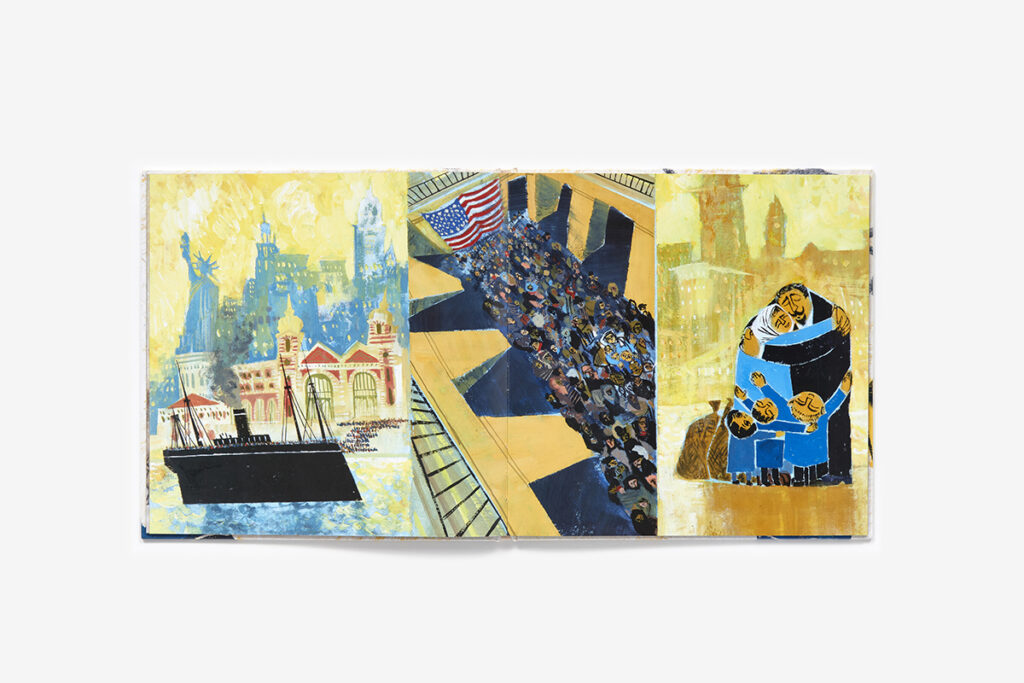
It was about this time that his family made him drop out of school so that he could get a job and help financially support them. This required him to apprentice somewhere and attend school at night. His painting teachers also frustrated him because the landscapes bored him. He wanted to paint life, in all of its ugly, unfair, chaotic beauty.
That’s the sense that one gets from Turk’s artwork in The People’s Painter. Some of the shapes are distorted. The angles are wonky, the colors sometimes blend together and are sharp and linear at other times. It’s the style of Ben Shahn and it really captures the pain of the early 20th century.
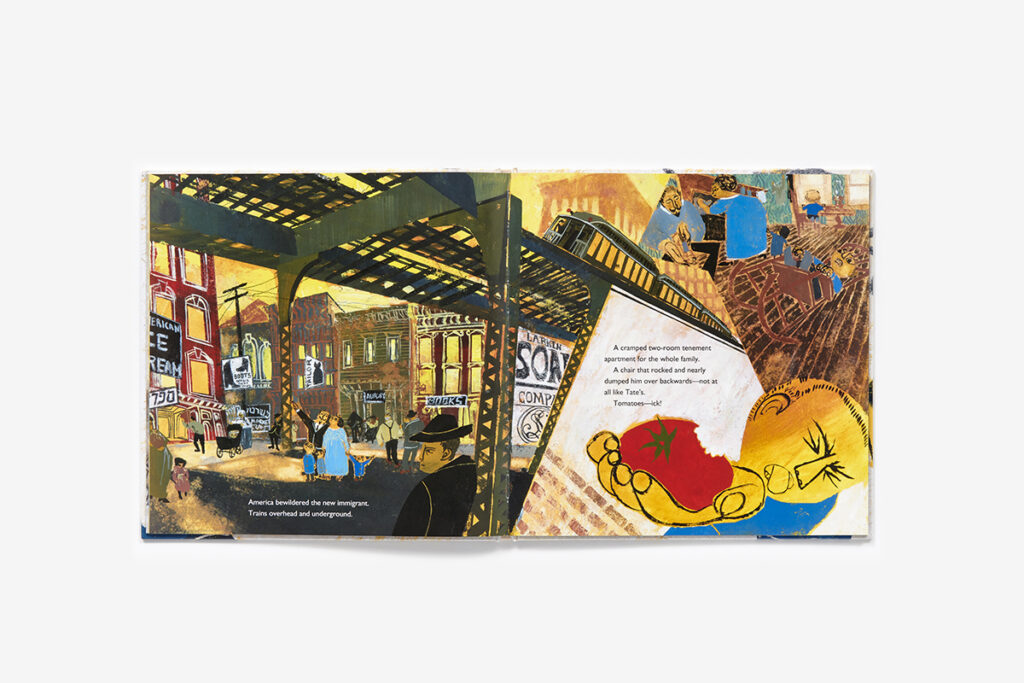
Shahn’s photography and paintings helped show people in the 1920s and 1930s who were working, tired, and not what the newspapers typically had on the front page. His work resonated with people, which earned him government painting jobs in the 1930s to create murals that showed the journey of immigrants. His activist work carried on into the 1950s and 1960s as he illustrated the civil rights movement.
The words in The People’s Painter work nicely with the art also. They’re detailed and use many Hebrew words in the text as common terms. Because those words are used in context, it’s very simple to follow along and upper-elementary school students will easily be able to know what mame, tate and shtetl are after reading the sentences and briefly thinking about them.
For most young readers The People’s Painter won’t be a good night book. It’s the story of Shahn’s life and will ultimately lead young people to ask questions about people who were treated unfairly or a period in world history when things were very dark. They’re discussions that will happen with kids, but bedtime might not be the time that you want to have them. This book will be at home in any library, classroom, or even home library, for that quiet time reading or those art kids that want to see a style that’s different than what they’re used to.
The People’s Painter is by Cynthia Levinson with art by Evan Turk and available from Abrams Books for Young Readers.
There are affiliate links in this post.

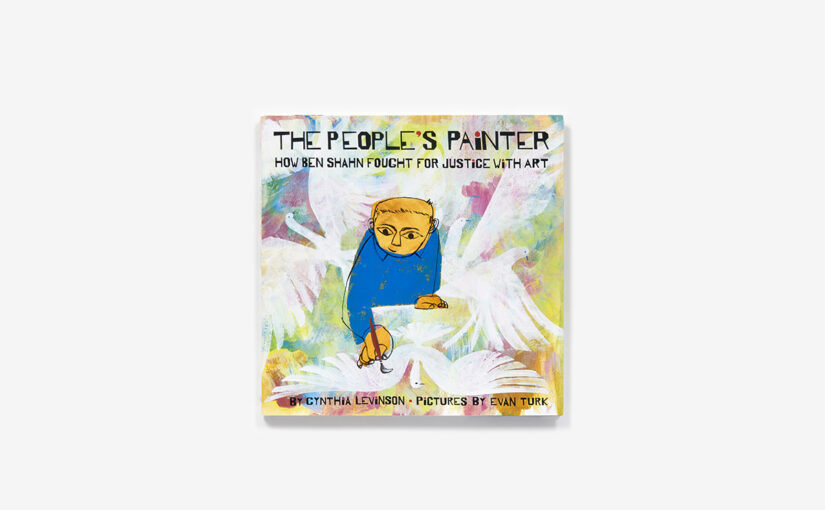



 Facebook
Facebook Twitter
Twitter Flickr
Flickr GooglePlus
GooglePlus Youtube
Youtube